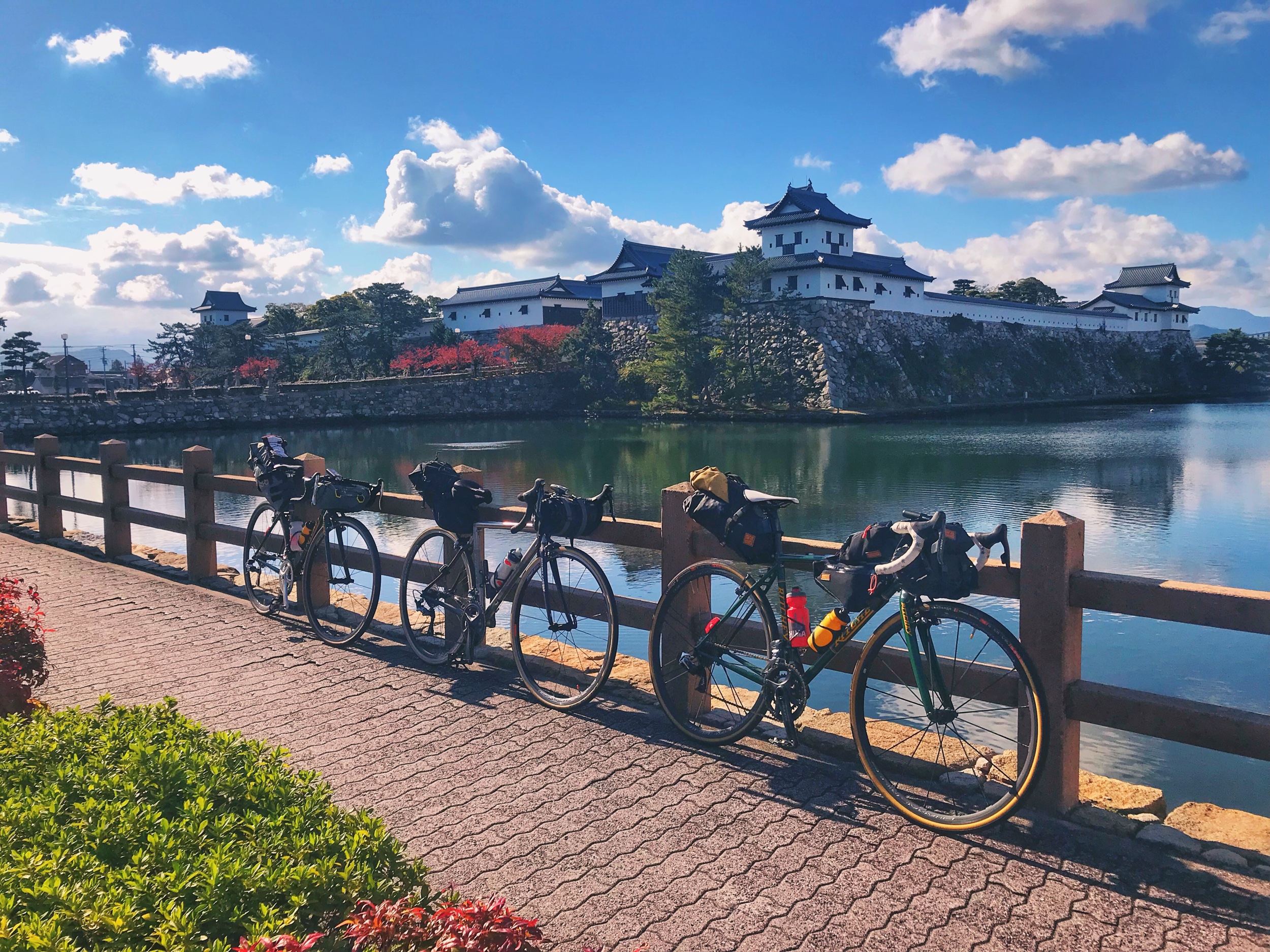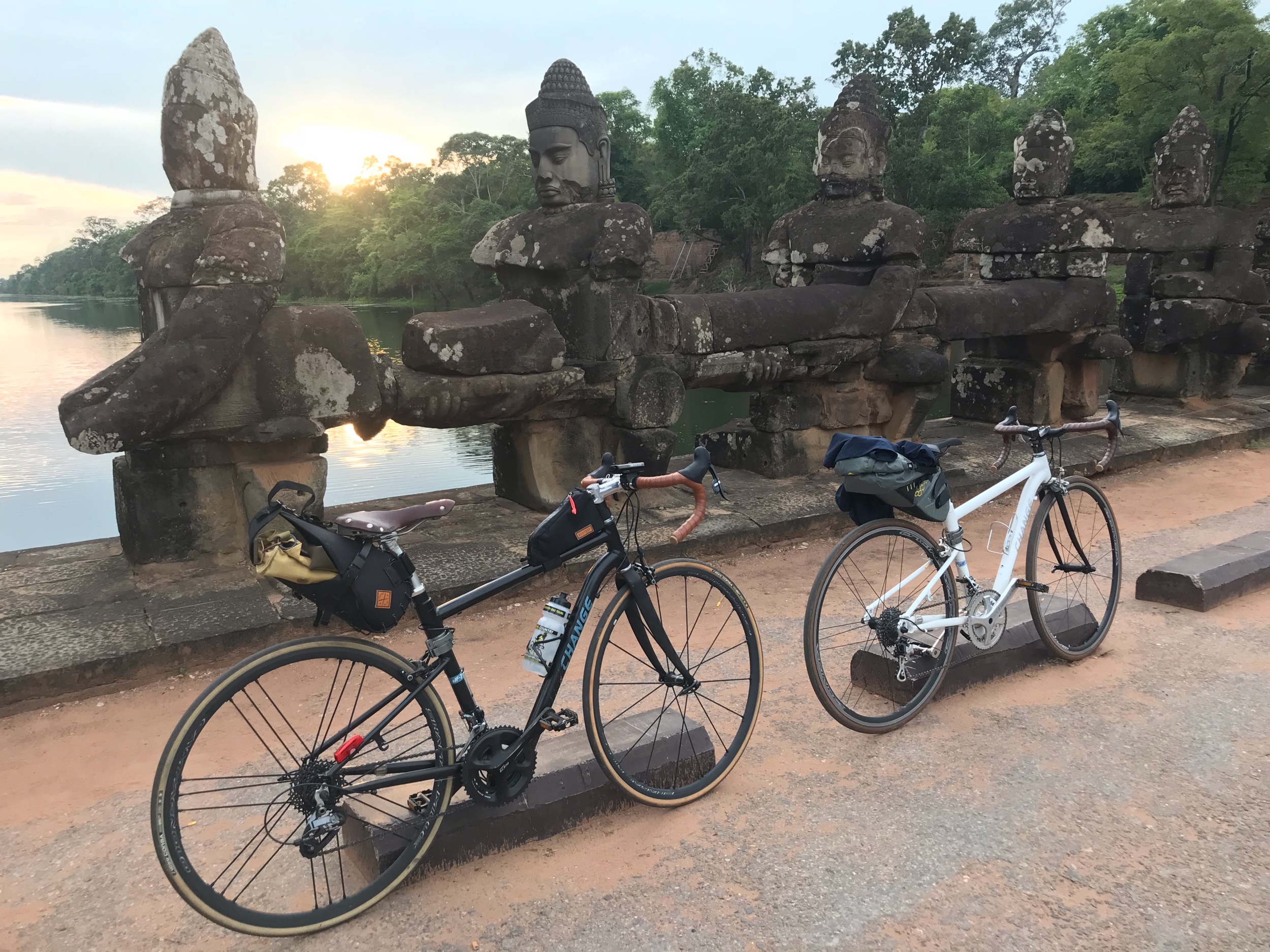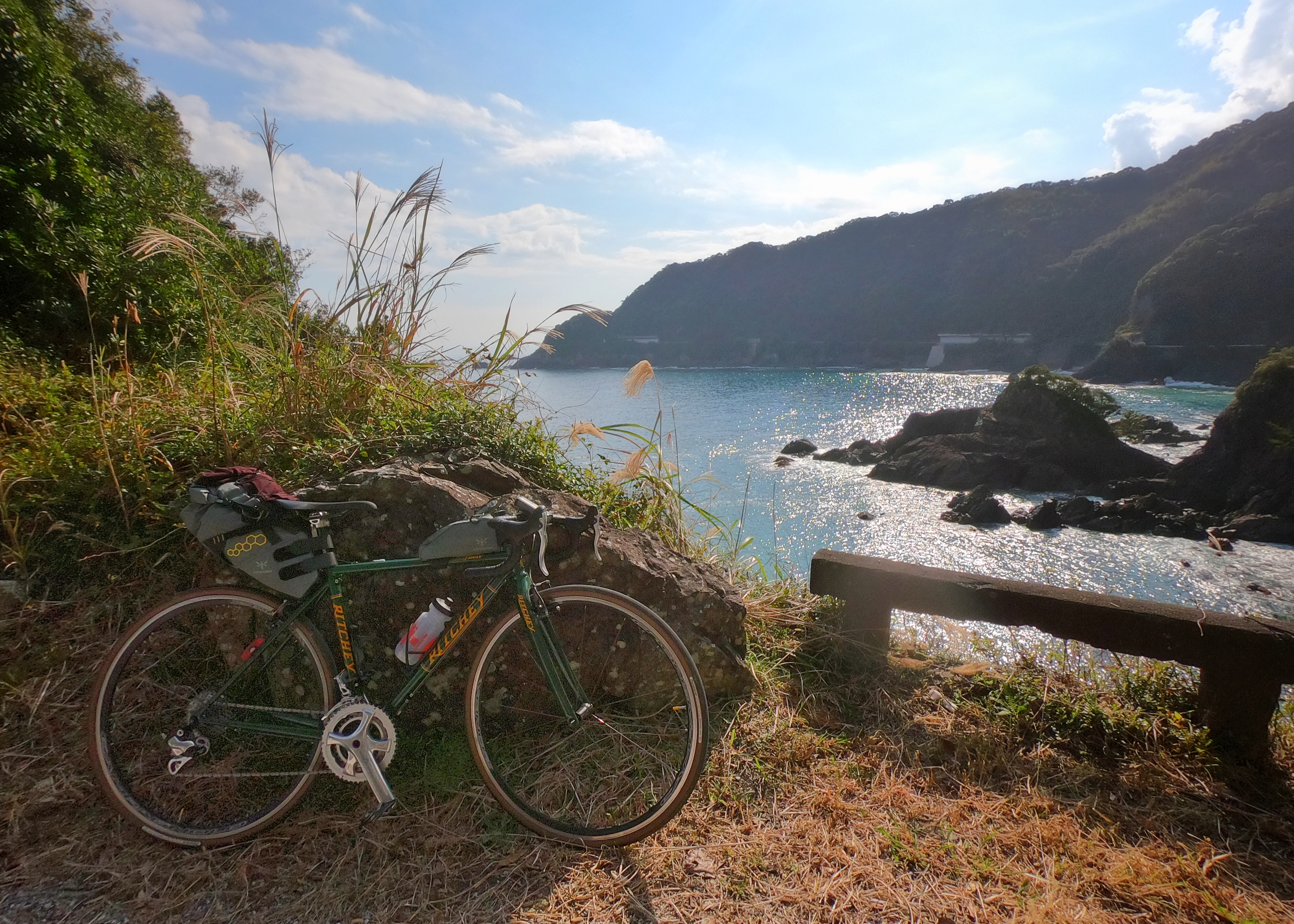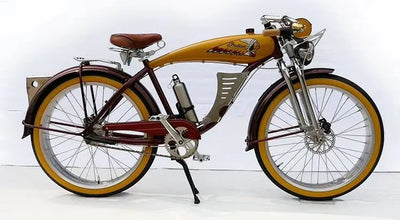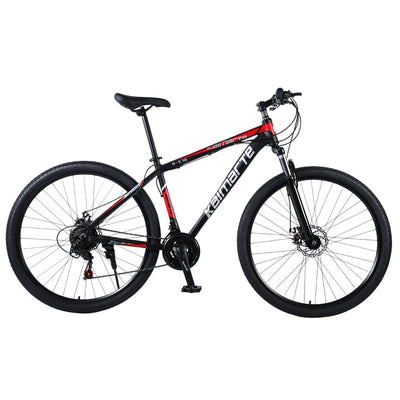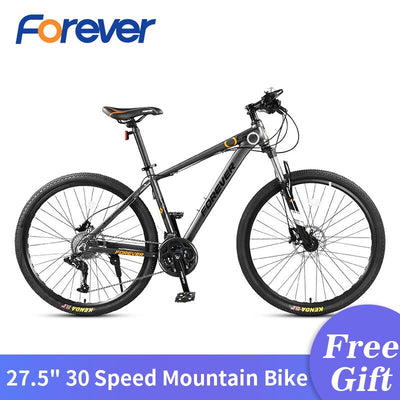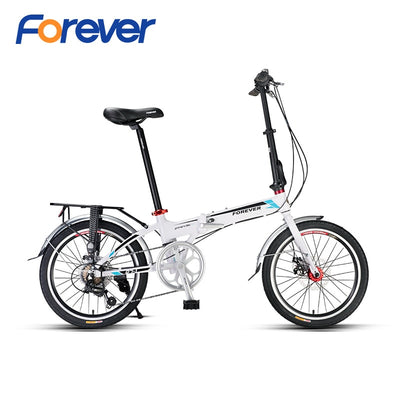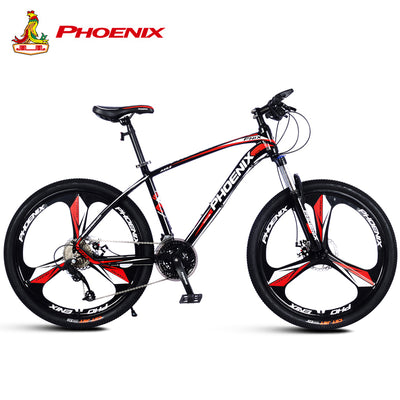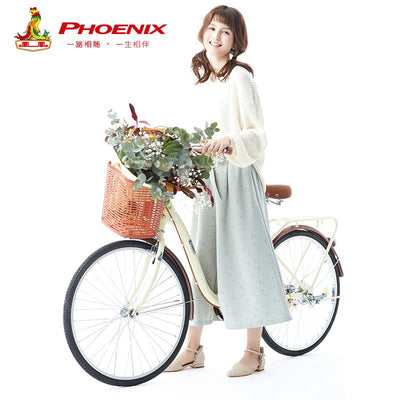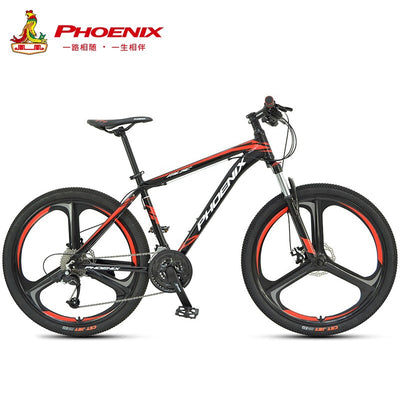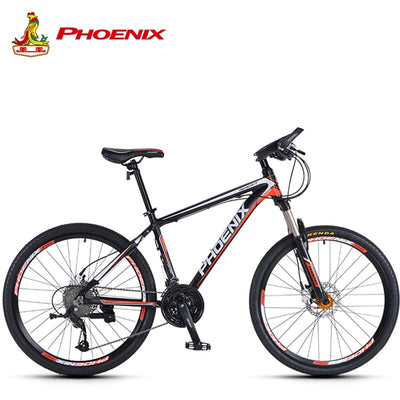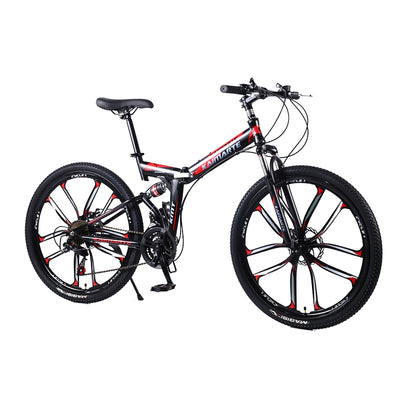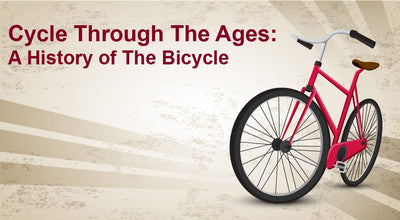A BASIC GUIDE TO CHOOSING A FOLDING BIKE
Posted by Tom Lee on
THE FOLDING BICYCLE MARKET HAS EXPLODED OVER THE LAST TWO DECADES, RESULTING IN AN AMAZING PLETHORA OF CHOICES FOR THE PROSPECTIVE BUYER, OVER A WIDE PRICE RANGE THAT TARGETS ALL BUDGETS. THERE’S SIMPLY SO MUCH TO CHOOSE FROM, WHICH CAN BE MIND BOGGLING.
Here at Folding Tales, we consider the bicycle an important investment that should not be taken lightly, because it costs money. We get a lot of questions about the bikes we ride and while we personally endorse some brands over others, that does not mean that they are right for everyone. You could always sell if you buy the wrong bike or change your mind later, but the nature of devaluation means you will suffer some losses in the process.
This guide is meant to help you understand whether a folding bike is the right choice for you, and in doing so, determine which type is best for your needs. Hopefully, we help you make the right decisions based on what we have learnt over the years.
FOLDING BICYCLE VS FULL SIZED BICYCLE
Let’s first look at three key decision points of whether you really need a folding bicycle or a full sized bicycle.
POINT 1
Ask yourself whether you really need a foldie. This is obviously the first thing to consider. The key to ensuring you have no regrets, is knowing exactly what you are buying, and precisely why you are buying it. Many people ask us for advice on buying a foldie under the misconception that it is cheaper than a normal bicycle, which is never the case. The assumption is that since they fold up and look like toys they must not be real bicycles, therefore should be cheaper. Like many other consumer products, there are many choices at different price levels designed to appeal to different target audiences.
POINT 2
Think about what you want to use this bicycle for. Do you plan to commute with it or do fun rides in the park? Are you hoping to ride long distances or go offroad if you need to? This will eventually tell you whether you even need a foldie at all. When it comes to cycling, understanding what you want to use the bicycle for helps you to pinpoint which model suits you best. You may like the idea of having a foldie that can be stored in your car boot easily, but it all still depends on how and where you ride.
POINT 3
Consider whether you need any specific sizing. After doing extensive research, we’ve discovered that not all bikes fit all riders, and the same goes for both foldies and their full sized counterparts. Many foldies are meant to have adjustable parts for a range of rider heights, but this approach that manufacturers take is not foolproof. You may love the design and technology of a certain brand, but it may not actually be the right fit for you size-wise. This is particularly true for women and petite Asian riders, especially if they are as short as I am.
SHOP AROUND
In the digital age, a wealth of information is always at your fingertips, available 24-7. There is no excuse for a bad decision based on insufficient research. Also, test ride anything and everything you can get your hands on. This was a crucial part of my process in creating a shortlist, which was whittled down until I found “the one”. It was not love at first sight with our bikes, but rather the result of painstaking, long and drawn out searches. Even so, if you know us well you know that the search for the perfect bike generally continues over the years, with the Velominati n+1 rule always in the back of our minds.
For Eka and myself, we opted to first go with a small wheel folding bike and bought our Birdys before upgrading to the faster folding minivelo called the Reach. Over the years we realised that what we really loved about cycling was the ability to explore and travel greater distances, which meant we needed full sized bicycles to cover more ground more efficiently (less time and energy), yet had the ability to pack easily when we needed to take a flight or other forms of transport. Hence the switch to full sized options like the Change Bike and the Ritchey Breakaways. Like us, you may notice that the way you ride and who you ride with will change over time, and that’s alright too.
WHY A FOLDIE?
Space considerations: Eka and I live in a box of a loft, and we utilise every single spare square foot we can. Now that we have more than one bike each, the foldies do a decent job of not cluttering up the house too much, tucking underneath the stairs and squeezing into small spaces nicely.
Commuting: In Malaysia and many other parts of the world, a foldie has more leeway being allowed on several inter and intracity train lines at controlled times, while full sized frames are limited to one train line on weekends only. Foldies are also easier to pack into a taxi or Grab, should you run into any problems you can’t solve while out on a ride.

Easy transport: Folded up, these bikes fit easier in most cars without the need to invest in a rack. We generally drive either a 4WD or a hatchback, and both have enough room for three foldies and one passenger in the back. The bikes are now our main mode of transport when travelling, supplemented by train/bus rides in between (and flights of course). Foldies and breakaway bikes pack fairly well depending on your ride/travel plans.
AGAIN, IT ALL BOILS DOWN TO WHAT YOU USE THE BIKE FOR.
If you’re looking for pure performance, a full-sized bike will be a better choice. Let’s assume for the sake of argument, that your foldie purchase is for non-competitive use.
MAKE A CHECKLIST FOR YOUR SHORTLIST
Here are several other considerations that will make the task of choosing your bicycle easier.
Price: In Malaysia (or elsewhere too), foldies can range between an estimated MYR500 - MYR15,000, depending on the quality. If you include break-away bikes in the mix, the most expensive I have come across is MYR80,000 and it can always cost even more than that depending on your components. That’s double the price of my trusty hatchback car, which comes equipped with an engine and keeps me dry in the rain! As with all bikes, the golden rule is you get what you pay for. Just like the average Malaysian, I was and still am fairly price sensitive, but I broke out of my own price limit when I realised that I wanted a certain level of riding comfort and certain features.
Folding mechanism: There used to be three main types available in the country, with different pros and cons. The most popular is the half or mid horizontal fold variety (Java, Dahon, Tern), although this design puts stress on the frame with frequent usage or when carrying heavy loads. The triangle hinge vertical fold (Birdy, Bike Friday, Tyrell) bikes are also gaining popularity, as these eliminate the problem of stress points, and often come with built-in suspension. The less common variety is the swivel fold (Montague, Change Bike). There are also bikes that feature two or three different folds for compactness (Brompton), or those that require minimal disassembly (Reach, Ori/Mezzo). There are also break-away foldies (Alex Moulton/Ritchey/bikes with S&S couplers), where the frame can be disassembled into two parts to fit into travel suitcases. Today though, there are many new foldie designs and those with e-assist incorporated, as bike commuting needs grow worldwide.
Weight: This will greatly determine how much effort is required to ride the bike, and whether you can move or transport it easily. The key is to match it to your chosen activity, and your physical capability. I have a back condition that means no heavy lifting, (a rule i break every now and then due to strength I’ve built up through weight training) and this was a huge factor in my own decision. Another thing to remember is that foldies in general are always heavier than full sized bikes despite being smaller (yes, it really is true!), because the folding system adds more weight to the frame. There are foldies that weigh less than 10kgs, if you’re willing to pay for one. The weight weenies of the world know this rule well, shedding weight will definitely be a hit to your pocket. There will also be some safety considerations to these lightweight bikes, because remember that to make a bike lighter there will also be a weight limit for the rider too.
Ease of transport: This is obviously linked to the weight of the bike, in addition to the compactness of the fold. Some foldies cannot be wheeled when folded, which can be a problem when you need to lug it around in restricted areas like train platforms and inside buildings. Also, ask yourself if you’d like to travel with the bike, because some foldies are easier to fly with than others. You might also want to consider a breakaway bike rather than the traditional foldie, since these definitely pack easier and will either come with a dedicated suitcase or fit into a generic one. Some foldies need to be disassembled like a full sized bike for travel, rather than being able to travel in folded form.
Wheel size: Folding bikes come in a variety of wheel sizes. For compactness, the 16” wheel size that some brands use gives the most compact fold. Small wheels are also generally stronger and stiffer, due to the shorter spoke lengths. The key thing to note about smaller wheels is that you will feel the imperfections of the road more than a full sized 700c wheel. With that said, there are also a lot of folding bikes that use the larger 20” sizes (406 and 451) which feel better on the road, there are also foldies that can match the speed of full sized bikes thanks to 26” and 27.5”/650B wheels and a tiny bit more effort. In terms of acceleration, small wheels are pretty fast on stop and go rides and are great for city riding. However, basic physics prove that bigger wheels are still more suited for longer distances as they have more momentum which takes less effort to sustain constant speeds.
Suspension: Most foldies are made of either aluminium or alloy, so they do not absorb shocks in the same manner as traditional steel frames. Some offer no suspension at all, some have front or rear suspension built into their folding mechanism, some have both. If you plan to ride on more than just smooth tarmac, some form of suspension will come in handy. The Brompton is one of the few foldies with a chromoly steel frame that naturally absorbs shocks, which also helps to offset the smaller wheel size. There are also new brands of foldies that are made of carbon fibre or titanium, for a more lightweight feel. Full suspension models like the Birdy and Moulton use the suspension to absorb road imperfections and give more comfort. In the end, it is always best to find a shop that allows you to do a test ride to get a good feel, if not, reading extensive reviews is your next best option.
Future upgrades: Is the foldie compatible with standard full sized bike components or specialised parts only? This is especially true when it comes to tyre sizes, since there are limited options for small wheels. Some foldies also use proprietary technology that are not compatible with parts for full sized bicycles, or complementary products will be insanely overpriced and sold by third party manufacturers. You’ll appreciate a wide range of choices when looking for specific components, something we experienced with sourcing items for our own Change and Ritchey upgrades or replacement parts over the years.
Availability: As I mentioned earlier, the market is saturated with products, and it can be hard to know what to buy. The same rule applies to the after sales service of cars. Bike retailers will be able to order a more obscure brand or model for you, but will they have the expertise to handle servicing or fixing the bike, or have the parts to do it? Do they have a direct relationship with the manufacturer? What kind of warranty can they offer? In the digital age we do have the opportunity to order direct online, but you need to bear in mind that this will come with the risk of not having any support in the event of any problems or issues. If it is a reputable company then you’re more likely to get help, but even so, remember that ordering from a foreign company will mean a bit more hassle for warranty claims and the like. Establish a connection beforehand by emailing a company rep to gauge their customer service responsiveness - this would be a great way to test the waters. We’ve also found that sometimes the local dealers are the problem, not the parent company itself!
TO TOUR OR NOT TO TOUR
Can you tour on small wheels? We’ve come across this question ourselves because it gets asked a lot in the touring groups by newbies. Admittedly, we’ve done it too, and there’s an extremely good reason not to. As mentioned above when it comes to wheel sizes, the fact of the matter is that foldies are ultimately made for commuting more than anything else. Unless you are an insanely strong rider, touring on full sized wheels will be more practical because you use less time and less energy to cover the same amount of distance.
Sure, you could argue that you’re taking it slow and not rushing, but the same logic applies. With bigger wheels you can still ride leisurely yet arrive faster, thereby having more time and energy to enjoy both your journey and destination. If you read about the first day we toured in Spain’s Andalucia region, you will understand why we say this. Eka was on 700C wheels and myself on 20”, and my extreme fatigue due to the sheer amount of energy needed to climb on smaller wheels meant we rode well past sundown, and actually put us in very real danger that first night.
Another issue is the fact that some foldies with hinges on the frame are also not meant to carry so much weight (think 10-15kg of full panniers with camping gear). Neither are they meant to rack up so much mileage, which will put significant torsional stress on the frame from pedalling under extra load. If you dig into a lot of articles or personal experiences by foldie riders, some have snapped their frame hinges while doing heavy touring or from continued heavy daily use. If you must, opt for the folding systems that do not involve a hinge in the frame, because this is a stress point that could break.
Then what if you plan to do some multi-modal travel, hopping on trains or buses or even a boat or ferry ride in between? There are foldies with larger wheels that can do this quite well, yet still tuck into cargo spaces quite nicely when folded. We’ll compile a list of these recommendations soon, but generally the wheel sizes that you should look for are 26” (minimum), 27.5” or 650B, and 700C. Trust us on this, we’ve tested small wheel touring vs big wheel touring a number of times.
FINALLY, HERE’S A BIT OF A CHEAT SHEET (IN ALPHABETICAL ORDER) IF YOU HAVE NO TIME OR CAN’T BE BOTHERED TO READ A HUNDRED REVIEWS.
I sort of wished we had this article to refer to as opposed to our countless online searches and cross checking information with other articles as well as scouring the local shops. Mind you, I won't be able to cover all the foldies in the market, just the main ones that I feel are good enough to be in your shortlist.


